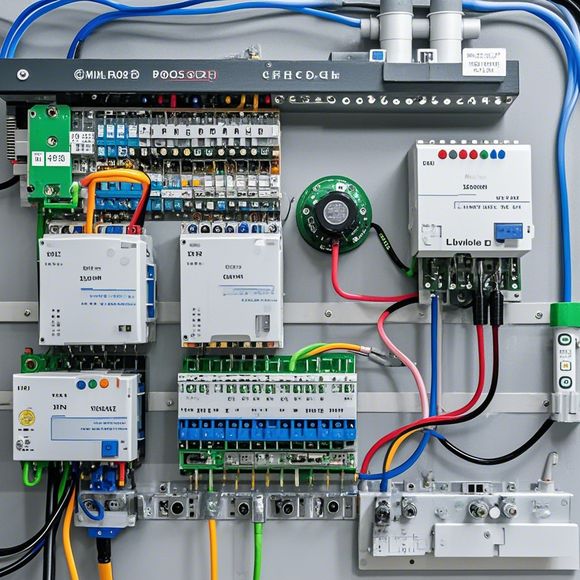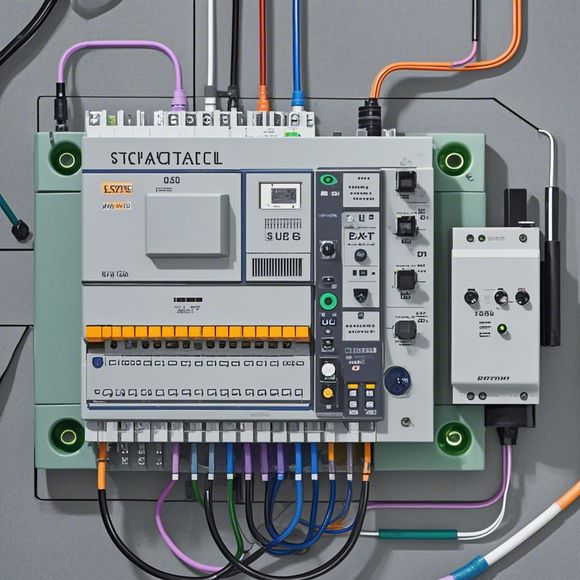Water Pump PLC Control System Implementation and Maintenance
Water Pump PLC (Programmable Logic Controller) Control System Implementation and MaintenanceTo implement the Water Pump PLC Control System, first, you need to choose the right type of PLC according to the system requirements. Then, connect all the sensors, valves, and actuators to the PLC through appropriate communication protocols like Profibus or Ethernet. After that, program the logic of the system in the PLC software. The main tasks include setting up the water pump parameters, controlling its start/stop, monitoring its status, and adjusting its speed based on the flow rate.To maintain the PLC Control System, it is crucial to regularly check the system's hardware and software for any issues. You should also ensure that the PLC is properly powered and connected to the network. Additionally, you need to update the PLC firmware periodically to fix bugs and improve system performance. Finally, conduct a regular PLC testing to verify the system's functionality and safety.
Hello everyone, today I'm excited to share with you the detailed implementation and maintenance process of a water pump PLC (Programmable Logic Controller) control system. As a responsible sales and operations manager, I believe that understanding how these systems operate is essential to ensuring efficient operation and longevity of your equipment. Let's dive into the key aspects of this topic together.
Firstly, let us talk about the basic principles behind a water pump PLC control system. A typical water pump PLC control system includes several critical components such as sensors, actuators, and logic boards. The main goal of the system is to regulate the flow rate and pressure of water, thereby maintaining optimal operating conditions for the pump. This is achieved through the use of feedback loops and advanced algorithms that adjust the output based on input data from various sensors.
Now, let's discuss the steps involved in installing and configuring an effective water pump PLC control system. The first step is to choose the appropriate hardware components, including sensors, valves, and motors, which will be integrated into the system. It is important to select components that meet the specific needs of your application, such as temperature, pressure, flow rate, and power requirements.
Once the hardware components have been selected, the next step is to design the control logic using software tools. This process involves creating algorithms that interpret input data from the sensors and adjust the output of the actuators accordingly. The design of the control logic should take into account the dynamics of the system being controlled, as well as any external factors that may affect the performance of the pump.

Once the control logic has been designed, it needs to be programmed onto the PLC using specialized software. This involves writing code that defines the functions of the different components within the system and sets up the necessary communication protocols between them. It is important to carefully test each part of the system before integrating them together to ensure smooth operation during startup and shutdown procedures.
Once the PLC has been programmed, testing must be performed to verify that the control logic works correctly under all possible conditions. This involves monitoring the output signals from the sensors and actuators to ensure that they are responding accurately to changes in the input data. Additionally, simulation tests can be conducted to simulate different scenarios and observe how the system reacts under stress.
Finally, once the system has been thoroughly tested and verified, it can be installed on-site and connected to the existing infrastructure. This involves connecting wires and cables to the appropriate terminal blocks and ensuring that everything is properly grounded. Once the connections are complete, the system can be turned on and monitored to ensure that all components are functioning as expected.
In terms of maintenance, regular inspection and cleaning of the sensors, actuators, and other hardware components are crucial to maintaining the performance of the water pump PLC control system. It is recommended that maintenance tasks be performed by trained technicians who are familiar with the specific components of the system being maintained. Additionally, regular updates and upgrades to the software can be performed to ensure that the system remains optimized for future performance requirements.

In conclusion, implementing and maintaining a water pump PLC control system requires careful planning and execution. By following the steps outlined above, we can ensure that our equipment operates efficiently and reliably, providing optimal performance for our customers. Thank you for taking the time to listen to my presentation on this topic, and please feel free to ask any questions or share your thoughts on this subject.
Content expansion reading:
Articles related to the knowledge points of this article:
PLC Controller Wiring Guideline
PLC Programming for Automation Control in the Manufacturing Industry
PLC Controllers: A Comprehensive Guide to Understanding Their Prices
Effective Strategies for Handling PLC Control System Faults
What is a Programmable Logic Controller (PLC)
Understanding the Core Components of a Programmable Logic Controller (PLC)